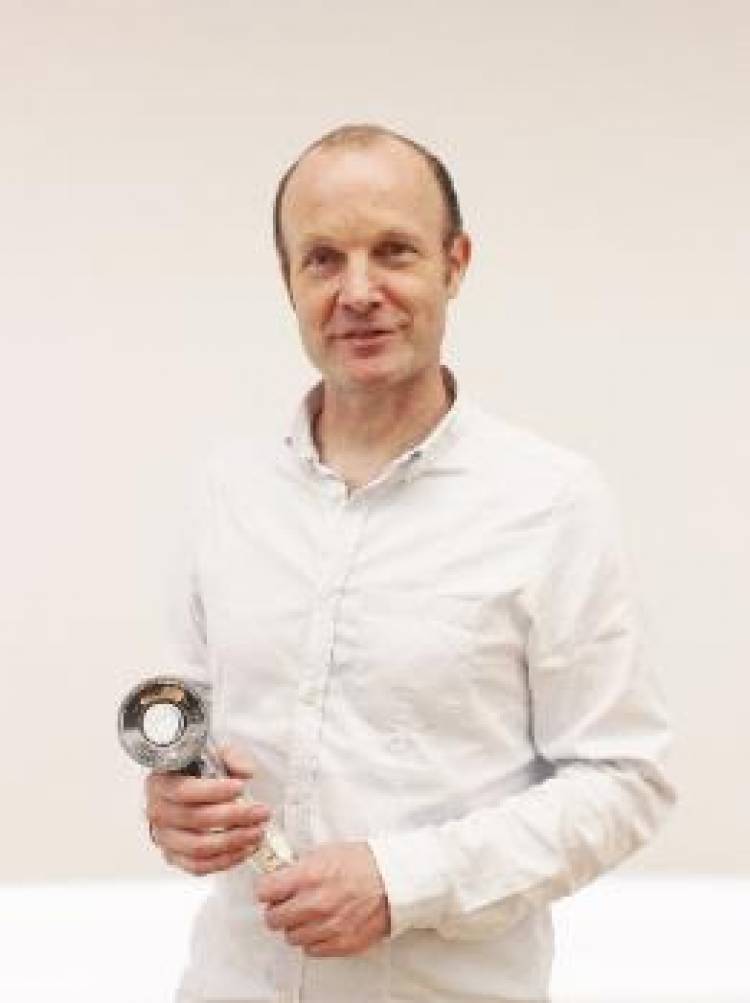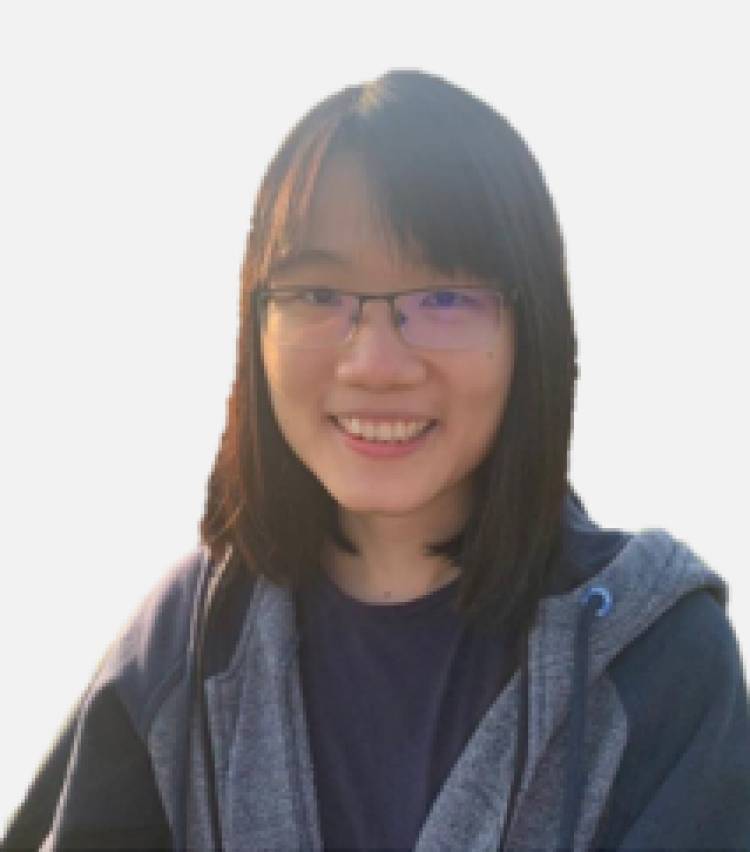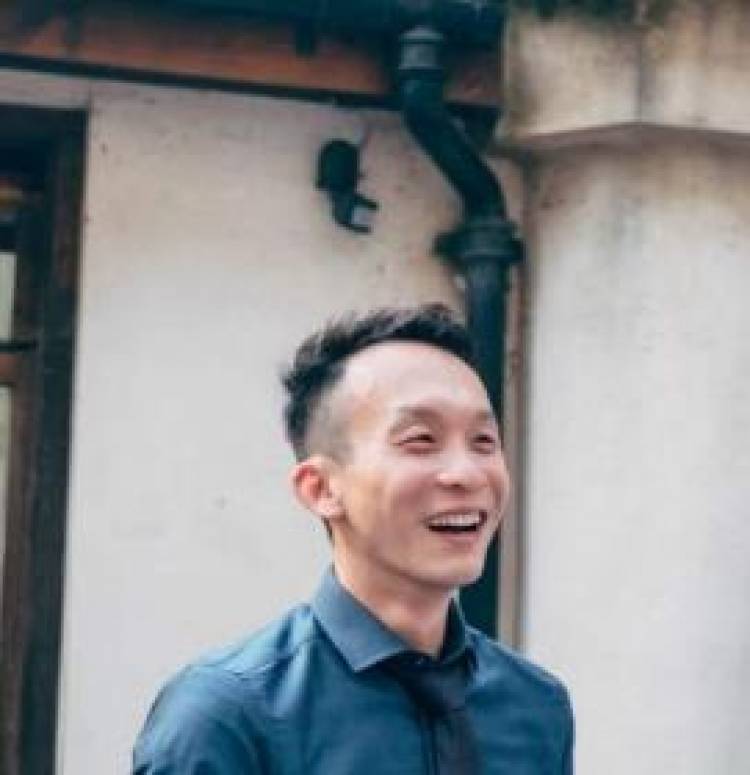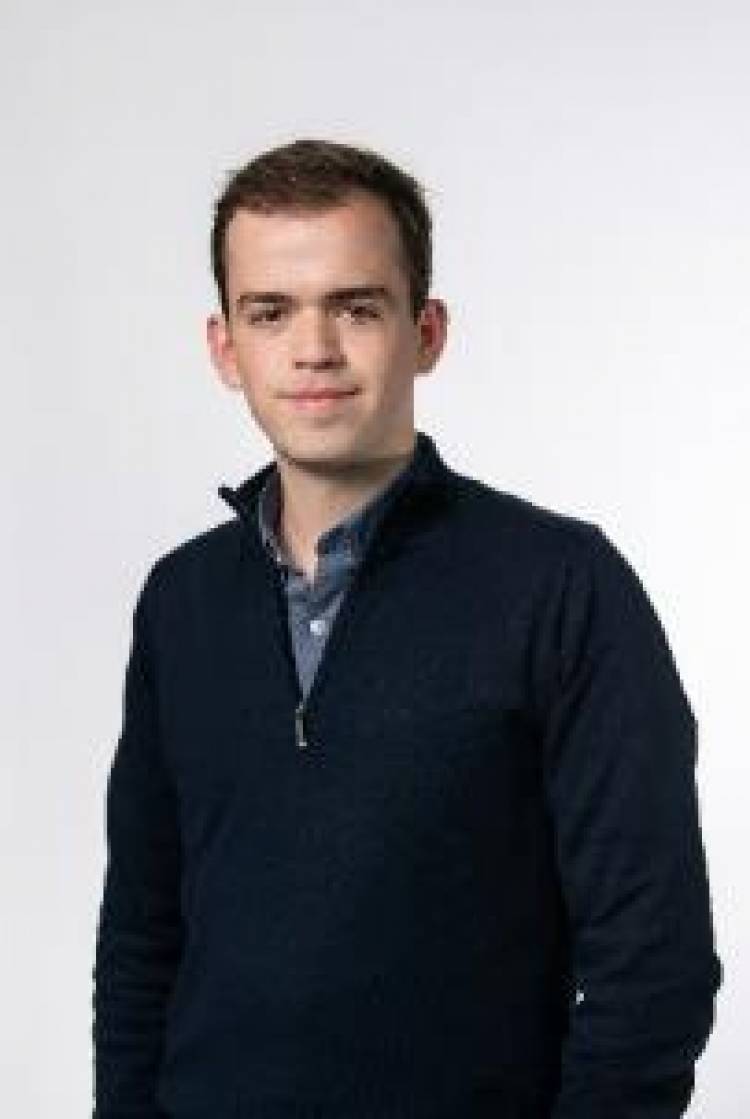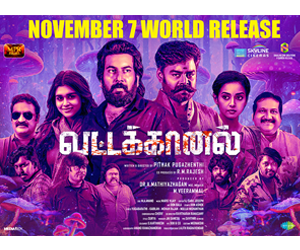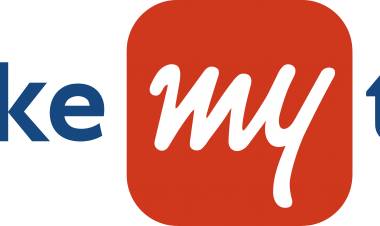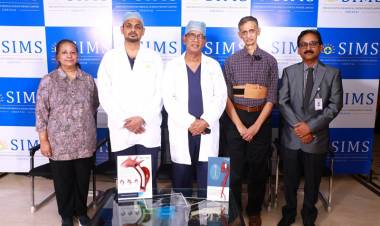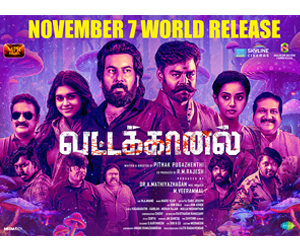Dyson engineers select the James Dyson Award Global Top 20 finalists
Dyson engineers select the James Dyson Award Global Top 20 finalists
• The 20 best inventions from over 2,000 entries into the global James Dyson Award have been selected by a panel of Dyson engineers.
• 15 Dyson engineers from across the world came together to decide the finalists.
• Sir James Dyson will now select his global winners from this list, announced on 17 November.
New Delhi, 13 October 2021: Today marks the beginning of the international stages of the James Dyson Award 2021 as the global shortlist of 20 pioneering inventions has been announced. All have the chance to become a global winner and receive £30,000 to support the next stages of their inventions.
In August, the Award announced its national winners and runners-up, across 28 countries and regions. From bio-leather made from citrus peels, an aircraft sealant made from Pili resin, a wearable biomedical device for at-home intraocular pressure testing, to sustainable sanitation for bottom-of-the-pyramid communities – this was just the start of uncovering the world’s next brightest minds and young inventors.
The Top 20 Shortlist
15 Dyson engineers, scientists and designers from around the world have reviewed the 83 national finalists to curate this year’s global Top 20 shortlist of inventions.
At Dyson, we believe great ideas come from diversity of thought and experience. Our judges celebrate the wide range of knowledge and expertise within Dyson’s Research, Design and Development teams. They specialise across a broad range of engineering fields including Microbiology, Automation, Sustainability, Software, Motors and Technical design, Early Concepts, Healthcare, Manufacturing. They were joined by high-performing undergraduates from the Dyson Institute of Engineering Technology to share their insight, challenging conventional design processes.
“I believe the James Dyson Award is an extremely effective way of encouraging young engineers to focus hard on their ideas and move the designs forward quickly. The Award provides a fertile starting ground for innovation to take root and get the support and recognition that teams and individuals need to succeed.” John McGarva, Global Head of Design Engineering at Dyson and Top 20 judge.
The panel analysed, debated and reviewed all the national finalists, coming together virtually to whittle down the final shortlist.
“What impressed me the most about the Top 20 shortlist was that many entries originated from a very human origin – empathy. Inventions were inspired by the suffering of others, be it limitations in mobility, visual impairment, barriers in communication and so on. Addressing these issues shows that young people care and want to bring a genuine difference to those that are less fortunate.” Eilenne Loh, Floorcare Design Engineer at Dyson and Top 20 judge.
Invention never stops.
Students around the world continue to prove that invention never stops and that they have the capability to solve the world’s most difficult problems. 2021 is another record-breaking year for the Award receiving the highest number of entries ever, with over 2,000 projects submitted to take part in the competition. The Top 20 inventions are designed to solve global issues head-on with unique solutions. Whether that is a scanner to determine types of plastics, an assistive drawing device or new male contraceptive, these solutions have global resonance. Many of these ideas have been developed over the past two years in a global pandemic. Collaborating with teammates virtually and making the most of at-home resources whilst laboratories were closed.
What makes an entry Top 20 worthy?
Lead Technology Scout, Kay Yeong, says: “The invention needs to solve a real challenge with a well-researched and elegant design. The entrants need to demonstrate that they really understand what the problem is, engaged with experts and end-users, and try as much as they can to test and improve their solutions.”
“A thoroughly considered design is key, with evidence of a deep iterative process, and an openness around failure – the lessons learnt and improvements made. Great inventions take time to flesh out, and failures are necessary to refine the design.” Alex Davison, Undergraduate Engineer at the Dyson Institute of Engineering and Technology.
So, what does the future of invention look like? Read about our Top 20 inventions on the Dyson Newsroom here.
Stay tuned for 17 November 2021 when Sir James Dyson will announce the global winners of the James Dyson Award.
--Ends--
Appendix
The Top 20 Shortlist (in alphabetical order).
Invention Solution Country
Algobio
A non-toxic flame retardant, using a biopolymer made from seaweed. Canada
ArchGuard
ArchGuard uniquely offers complete cerebral protection using a shape-memory frame and porous mesh to deflect debris away from the brain, providing a safer and more intuitive way to prevent strokes and silent ischemia during transcatheter aortic valve replacement (TAVR) procedures. US
Citra
A new bio leather made of citrus peel waste and organic binders. Malaysia
COSO
COSO is an ultrasound-based, reversible and hormone-free male contraceptive device for home use that temporarily modifies spermatogenesis. Germany
Enayball
Enayball holds art tools (from 4-40mm in diameter) with an adjustable clamp, allowing those who may be paralysed or suffering from MS to draw, paint and write. UK
Field of Vision
A handheld device that uses AI enabling the visually impaired to experience football games, aside from just audio. The user can feel the position of the ball on the pitch in real time. Ireland
Guided Hands
Guided Hands is a mechanical assistive device that enables anyone living with limited hand mobility to write, paint, draw and use a touch-screen device. The innovation helps to regain their confidence, independence, self-expression and cognitive skills. Canada
HIIVE
HIIVE is a better bee home that enables beekeepers to keep their bees in a natural way, by supporting the natural behaviour of the Apis Mellifera. It is made of sustainable materials and with its low energy sensors it offers an all new beekeeping experience. It replicates the micro-climate of a tree-cave. Germany
HOPES
HOPES is a wearable biomedical device for pain-free, low cost, at-home intraocular pressure (IOP) testing. Powered by patent pending sensor technology and artificial intelligence (AI), HOPES is a convenient platform for users to self-monitor IOP. Singapore
LOTA+
LOTA+ system is a low cost, sustainable and complete off-grid toilet solution consisting of three parts: the upper shelter, hand-wash station and an advanced sewage mechanism. Singapore
LUNA
The LUNA Modular AFO is a new approach to Ankle Foot Orthosis design, targeted at young and growing individuals with Hereditary Spastic Paraplegia. The unique design allows the device to adapt and grow with the wearer through a toolless modular system. Australia
ManiFlex
Maniflex offers a new functional and integrated solution to traditional braces, using the unique properties of Thermoplastic Polyurethane (TPU). Belgium
Morpho
A bandage that changes colour when stretched, the colour shows how much pressure is applied, greatly simplifying treatment. This material has a plethora of other use cases, from sportswear that can visualize athletic performance, to a new generation of robotic hands that can better interact with the world around them. US
Oto
OTO is a hug chair with inner walls that apply deep pressure on the chest or on the legs. This allows users to feel the limits of their body and focus on sensory information, reducing tension to help people with autism feel better in their environment. France
Pili Seal
With commercial sealant deemed unsafe and having toxic effects on users, Pili Seal is a two-component sealant that serves as the base ingredient for aircraft fuel tank sealant production. Philippines
Plastic Scanner
The low-cost, handheld Plastic Scanner tells you on the spot what type of plastic a product is made of. A device that can identify over 75% of all the plastics around the world, using light reflections as it scans the material. Netherlands
Pyrus
Pyrus is a petroleum-free wood-like material sustainably produced with repurposed bacterial cellulose waste from the kombucha industry. US
REACT
The REACT system uses a rapid, inflatable Tamponade device that is inserted into the stab wound. The automated inflation of this Tamponade provides internal pressure direct to the bleeding site, controlling bleeding faster than current methods. The implantable medical-grade silicon Balloon Tamponade is inserted into the wound tract by a first responder. UK
S’werve
In contrast to conventional wheelchair models, people with limited arm and hand function can control "S'WERVE" by shifting their weight and operate it with one hand. The principle is "steering by swivelling". Switzerland
Zerogap
Zerogap helps people with paralyzed lower limbs shorten the distance between the wheelchair and the toilet. It provides a more secure and comfortable way of transferring themselves, making the high-risk process simple and safe. Taiwan
Meet some of the Top 20 Dyson judges
Download headshots here.
John McGarva
Global Head of Design Engineering, Singapore
John is an experienced engineering leader with broad experience in technology, product development, and manufacturing. He has experience in healthcare, industrial and consumer goods industries, with a strong track record in leadership of large teams and delivery of complex projects.
John joined Dyson in 2018, and today leads the design engineering team developing the next generation of hair care products.
“I believe that competitions are an extremely effective way of encouraging entrants to focus hard on their ideas and move forward the designs quickly. The James Dyson Award provides a fertile starting ground for innovation to take root and get the support and recognition that teams and individuals need to succeed.”
Kay Yeong
Lead Technology Scout, UK
Kay is a Lead Technology Scout at Dyson. He works to find outside expertise, technology and capabilities to help support engineering at Dyson.
“It was interesting that there were several common themes that came through from diverse regions from around the world. I also hadn’t expected that many entries based on new materials. It came through clearly that there is considerable interest in disability aids, water purification and health/medical devices. In other words, inventions to improve and make a big difference to people’s lives.”
Yvonne Tan
Dyson Digital Motor Senior Engineering Manager, Singapore
Yvonne is a Dyson digital motor Senior Engineering Manager, and she is one of many working on the patented Dyson Hyperdymium motor. She is also a teacher and engineering mentor for young budding engineers in Singapore. At the Dyson-Nanyang Technological University Studio in Singapore, she guides engineers and inventors-to-be on how to develop products that solve problems, and to commercialise them.
“I’m motivated to encourage and show young people that they have the ideas and skillsets to solve real world problems. I am always inspired by the entries that we receive to the James Dyson Award, it showcases students’ passion in identifying a problem and taking on the solution as their own.”
Shohei Sugahara
Senior Design Engineer, UK
Previous JP JDA Finalist
Shohei is a Senior Design Engineer in Dyson’s Floorcare category. He works on early concept designs for Dyson’s future vacuum technologies. Shohei entered the James Dyson Award in 2014, with his invention called Raplus: a device attached to conventional rehabilitation orthoses assisting movement of the knee. It achieved the acclaim of making the global Top 20 shortlist of the Award.
“I entered the James Dyson Award a few years ago, progressing to the global Top 20 shortlist. This experience greatly helped my career into design engineering. Now I work at Dyson and so I wanted to support the Award to help the next generation of ambitious people.”
Eilenne Loh
Design Engineer in Floorcare, Malaysia
Eilenne is a design engineer for Dyson’s Floorcare category. She works on technical design and development to bring new products to the market.
“Being on the panel allowed me to be part of the wider goal of promoting a culture of innovation among youths all over the world. It is very exciting to see how young talents are constantly striving to make the world a better place - it makes me excited for the future, as they have proven, with their inventions, that the possibilities are endless when we tap into young minds.”
Richard Drix Piatos
Senior Automation Engineer, Philippines
Richard is a Senior Automation Engineer that leads the internal automation group of Dyson digital motor operations in the Philippines. He is responsible for designing and developing an automated process that would increase the efficiency of manufacturing operations. This role requires a diverse domain of engineering fields such as mechatronics engineering, electrical engineering, and computer engineering.
“I believe in the goal of the James Dyson Award, which celebrates bright minds and great ideas. The Top 20 entries have a powerful, global impact in inspiring the next generation of problem solvers. This is why the entries are carefully reviewed by us, and we have experts from the different fields of engineering within Dyson.”
Tash Taylor
Undergraduate Engineer, UK
Tash is a third-year undergraduate engineer from the Dyson Institute of Engineering and Technology. Whilst spending two days a week studying towards an engineering degree from the university of Warwick, she works three days a week in the aero-acoustics research team on turbomachinery projects.
“I’ve always found the winners of the James Dyson Award to be really inspiring and interesting pieces of work. This year I wanted to spend time exploring some of those projects to see more of the work done by young engineers from across the world. I also feel that the undergraduate engineers bring a different perspective to the other judges, as we may have different experiences and interests.”
Alex Davison
Undergraduate Engineer, UK
Alex is an Undergraduate Engineer, in his third year, at the Dyson Institute of Engineering and Technology, which means he studies an engineering degree apprenticeship while working on live Dyson projects. Alex currently works in Dyson’s New Product Innovation team, designing early concepts for future Dyson technology.
“As a student also working in a technology and manufacturing company, I know the benefits of being able to put knowledge into practice. The James Dyson Award is a significant opportunity to put your work on the global stage – to be seen and recognised for your ideas and achievements.”
Jake Adams
Undergraduate Engineer, UK
Jake is an Undergraduate Engineer at the Dyson Institute of Engineering and Technology. In this position he spends time during the week split between studying for an engineering degree and working in Dyson’s hair care research team, working to develop future technologies and improve fundamental knowledge in that category.
“I noticed a considerable number of entries focused on improving the lives of the most vulnerable in society: Guided Hands, Enayball, Field of Vision, to name a few. I also saw great ideas designed as topical responses to problems we see in the news, most notably impacts of Covid-19.”
Notes to Editors
Competition details
The brief. Design something that solves a problem. This problem may be a frustration that we all face in daily life, or a global issue. The important thing is that the solution is effective and demonstrates considered design thinking.
What happens next? All national finalists will proceed to the international stages of the competition. A panel of Dyson engineers will create a Top 20 shortlist from these finalists. Sir James Dyson will then choose his global winners from the Top 20 shortlist.
Who can enter the James Dyson Award? The James Dyson Award runs in 28 countries and regions worldwide. These are: Australia, Austria, Belgium, Canada, China, France, Germany, Hong Kong, India, Ireland, Italy, Japan, Korea, Malaysia, Mexico, Netherlands, New Zealand, Philippines, Poland, Russia, Singapore, Spain, Sweden, Switzerland, Taiwan, UAE, UK, and USA. The Award launches for the first time in Poland in 2021. Entrants must be, or have been within the last four years, enrolled for at least one semester in an undergraduate or graduate engineering/design related course. This course must be at a university in a country or region chosen to participate in the James Dyson Award.
Entrants must be, or have been within the last four years, enrolled for at least one semester in an undergraduate or graduate engineering/design related course. This course must be at a university in a country or region chosen to participate in the James Dyson Award. Those participating in a degree level apprenticeship at Level 6 or Level 7, and those who have completed said apprenticeship in the past four years, are now eligible to enter the award.
For more information and regular updates on the progress of the James Dyson Award, check out the Award’s website, Facebook and Instagram. You can also view past winners stories on the Dyson Newsroom here.
The James Dyson Foundation
Founded in 2002, the James Dyson Foundation supports design, technology and engineering educational work in
the UK and internationally in America, Japan, Singapore, Philippines and Malaysia. To date, James and the James Dyson Foundation have donated over £125m to charitable causes, including £12m to Imperial College London to create
the Dyson School of Design Engineering, and £8m to Cambridge University to create the Dyson Centre for Engineering Design and the James Dyson Building.
Each year, it also gives £130,000 in prize money through the James Dyson Award, an international design competition for university students and recent graduates. At school level, the James Dyson Foundation offers robotics workshops, led by Dyson engineers, and provides free educational resources. These include its most recent launch, Engineering Solutions: Air Pollution: introducing young people to air pollution and engineering’s role in finding solutions.
The Foundation also supports medical research and the local community in Malmesbury where Dyson’s UK offices are based. This summer, the Dyson Cancer Centre at Royal United Hospitals in Bath breaks ground, and the Foundation continues to support the Race Against Dementia Dyson Fellow, Dr Claire Durrant in accelerating finding answers to Alzheimer’s disease.
The Foundation has a website, Instagram, Twitter and YouTube.
For more information, contact:
Ria.kapoor@genesis-bcw.com
Mehak.juneja@genesis-bcw.com


